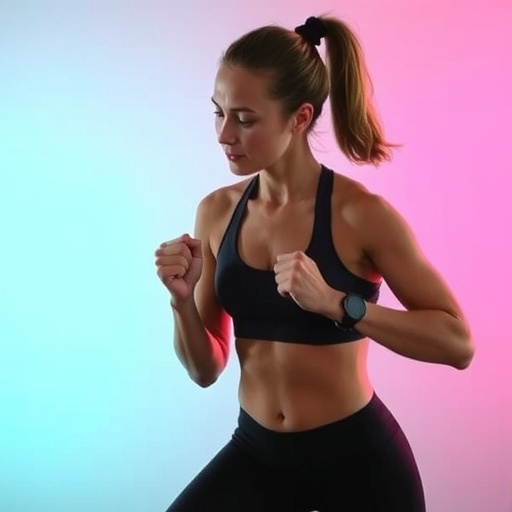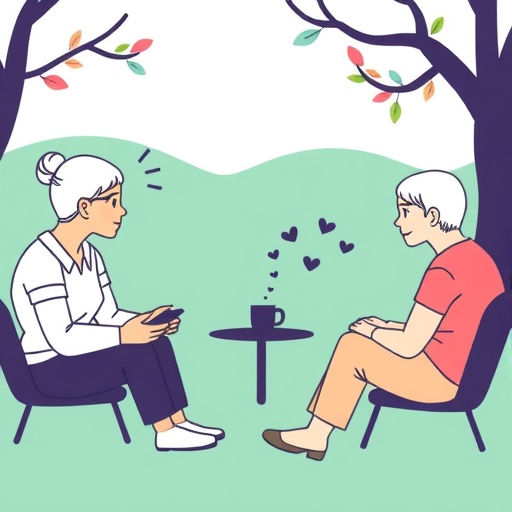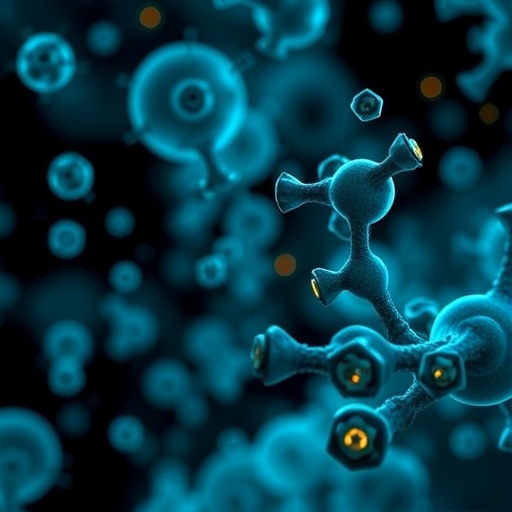In a groundbreaking study published in BMC Cancer this year, researchers have uncovered compelling evidence that a single session of high-intensity interval training (HIIT) can significantly mobilize key immune cells in adolescents and young adults (AYA) undergoing cancer treatment. This discovery opens a promising avenue for integrating physical exercise into cancer care protocols aimed at improving patient outcomes by harnessing the body’s natural defense mechanisms.
Natural Killer (NK) cells and innate lymphoid cells (ILCs) function as critical components of the immune system, playing essential roles in detecting and eliminating virally infected and malignant cells. The study spearheaded by Deppe et al. explored the acute immune responses triggered by a 20-minute bicycle ergometer HIIT session in a cohort of AYA cancer patients, comparing their immune responses with those of healthy peers matched by age.
Prior to this investigation, the immune status of cancer patients undergoing treatment was known to be compromised, leading to increased vulnerability to infections and potentially hampered anti-tumor immunity. By focusing on the dynamic behavior of NK cells and ILCs — which include several subpopulations such as CD56^dim^ and CD56^bright^ NK cells, ILC1-like, ILC2, and innate lymphoid cell precursors (ILCPs) — the researchers aimed to elucidate how acute exercise interventions might enhance immune cell mobilization even in this vulnerable demographic.
Blood samples were collected at three critical junctures: immediately before the exercise bout (T0), immediately after exercise cessation (T1), and following one hour of recovery (T2). This temporal approach allowed the researchers to capture rapid immune system fluctuations in response to acute physical stress. Using sophisticated flow cytometry techniques, the team quantified changes in cell counts and subpopulations, offering a detailed immunophenotypic characterization unprecedented in this clinical context.
The study revealed that total NK cells, along with cytotoxic CD56^dim^ NK cells, increased significantly immediately following HIIT in both the cancer group and healthy controls. This suggests that the mobilization of cytotoxic immune cells is a conserved physiological response to intense exercise. Notably, while CD56^bright^ NK cells increased only in healthy individuals, the other subpopulations such as ILC1-like cells, ILC2, and ILCPs surged robustly in both groups. These findings indicate that HIIT triggers a comprehensive mobilization of innate immune effectors in adolescents and young adults, irrespective of their health status.
The kinetics of immune cell populations during recovery were equally revealing. Total NK cells, including both CD56^dim^ and CD56^bright^ subsets, as well as ILC2 and ILCP populations, exhibited significant declines during the hour following exercise cessation. However, ILC1-like cells maintained elevated levels, reflecting possibly distinct regulatory mechanisms governing their circulation or recruitment. The sustained plateau of ILC1-like cells could be indicative of their crucial role in orchestrating post-exercise immune responses.
The absence of significant changes in NKp44^+^ ILC3 cells and the lack of notable inter-group differences in percentage changes of immune cell counts suggest that certain innate lymphoid subsets are less responsive to acute exercise stimuli or may require chronic intervention to manifest mobilization. This nuance underscores the complexity of immune regulation in cancer patients and highlights the need for prolonged or repeated exercise interventions to harness broader immunomodulatory effects.
Intriguingly, the data demonstrated a positive correlation between younger age and greater heart rate intensity—measured as a percentage of predicted maximal heart rate—and immune cell mobilization. This finding aligns with the hypothesis that both biological age and exercise intensity modulate the immune system’s responsiveness, offering practical insights for tailoring exercise prescriptions in clinical oncology settings.
This pilot trial fundamentally challenges the long-held notion that cancer patients might be too frail for intense physical activity. Instead, it demonstrates that even a single, well-supervised HIIT session can transiently boost critical immune components that may contribute to enhanced tumor surveillance and pathogen defense. The translational potential of this knowledge is far-reaching, suggesting that integrating HIIT into supportive care protocols may yield immunological benefits without exacerbating treatment-related burden.
The implications of this study extend beyond immunology, touching upon the broader field of exercise oncology where researchers are actively exploring how physical activity can improve patients’ quality of life, reduce fatigue, and potentially improve treatment efficacy. The ability of HIIT to trigger rapid immune cell mobilization may lead to improved resilience against infections during immunosuppression, a common and dangerous side-effect of chemotherapy and radiation.
Moreover, understanding the mechanistic underpinnings of exercise-induced immune mobilization could open new therapeutic windows combining physical activity with immunotherapies. As the immune microenvironment becomes an increasingly targeted battleground in cancer treatment, strategies that optimize immune cell availability and function are paramount.
Future research is warranted to investigate whether repeated HIIT interventions yield sustained or cumulative immunological benefits and whether these transient changes translate into meaningful clinical improvements in infection rates, tumor progression, or overall survival. Additionally, exploring the molecular signals that govern the trafficking and activation of NK cells and ILCs post-exercise could lead to novel drug targets mimicking the beneficial effects of physical activity.
In conclusion, this groundbreaking trial firmly establishes that even amidst the rigors of cancer treatment, adolescents and young adults retain a remarkable capacity for immune mobilization in response to high-intensity exercise. These findings advocate for the inclusion of tailored HIIT programs in multidisciplinary cancer care frameworks, potentially transforming supportive oncology into a domain where exercise is recognized not only as a quality-of-life intervention but as a vital adjunct to immunological defense and therapeutic efficacy.
With the global cancer burden continuing to rise, particularly in young populations, this study injects a dose of optimism and scientific rigor into the evolving narrative that exercise is medicine—capable of empowering the immune system to mount a stronger defense against disease. As guidelines evolve, clinicians, exercise physiologists, and patients alike may soon view HIIT not as a strenuous challenge but as a vital catalyst for immune resilience during cancer therapy.
Subject of Research: The acute mobilization of natural killer (NK) cells and innate lymphoid cells (ILCs) induced by a single session of high-intensity interval training (HIIT) in adolescents and young adults undergoing cancer treatment.
Article Title: The impact of a single HIIT intervention on the mobilization of NK cells and ILCs in adolescents and young adults (AYA) undergoing cancer treatment: an interventional controlled trial.
Article References:
Deppe, I., Beller, R., Kiehl, F. et al. The impact of a single HIIT intervention on the mobilization of NK cells and ILCs in adolescents and young adults (AYA) undergoing cancer treatment: an interventional controlled trial. BMC Cancer 25, 689 (2025). https://doi.org/10.1186/s12885-025-14058-3
Image Credits: Scienmag.com
DOI: https://doi.org/10.1186/s12885-025-14058-3
Tags: acute exercise effects on innate lymphoid cellsadolescent cancer care protocolsBMC Cancer study on HIIT benefitsboosting immune function in AYA cancer patientscancer treatment and physical exercise integrationenhancing immunity through structured exerciseexercise and immune response in young adultshigh-intensity interval training for cancer patientsHIIT and immune cell mobilizationimmune system dynamics during cancer treatmentNatural Killer cells in cancer treatmentphysical activity impact on cancer therapy






